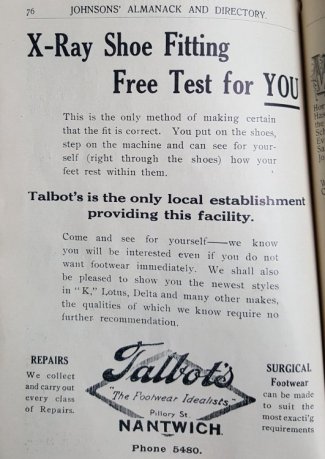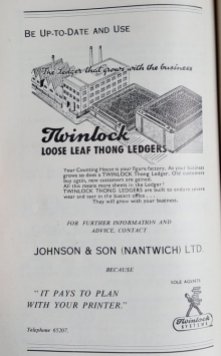
The facsimile of the diary kept by Petty Officer Harry Price on board the H.M.S. Ophir during the Royal Tour of 1901 was printed in 1980 by Webb & Bower of Exeter. Harry had died back in 1965 and it was his son Jack Price who showed it to the publisher and which led to the facsimile printing. Sadly it’s no longer in print but it is readily available on the secondary market for just three or four pounds, which considering how attractive the book is has to be one of the great book buying bargains.

Harry was a talented artist and had attended Birmingham School of Art before joining the Royal Navy where he rapidly progressed to Petty Officer before joining H.M.S. Ophir just in time for the nine month long world voyage of Prince George and Princess Mary. George held both titles of Duke of Cornwall and Duke of York hence the slightly odd description given and he would later become King George V on the death of his father in 1910.

The tour was started just two months after the death of Queen Victoria and was probably seen as an opportunity to introduce the younger Royals to the Empire after the end of her sixty three year reign. The diary is in Harry’s handwriting just as he originally wrote it as the voyage was progressing and provides a fascinating view of the trip and the various onshore excursions he managed.

According to the list at the front of the diary, the route was as follows: Portsmouth, Gibraltar, Malta, Port Said,Suez Canal, Aden, Colombo, Singapore, Albany, Melbourne, Sydney, Hawksbury River, Sydney, Auckland, Wellington, Lyttleton, Hobart, Adelaide, Albany, Freemantle, Mauritius, Durban, Simonstown, St Vincent, Quebec, Halifax, St. Johns and then back to Portsmouth.

I am including pages in sequence as the trip progresses so we have already reached New Zealand where he comments on the weather on the right hand page above. The style is quite chatty and it is clear throughout the book that he is intending this to be a souvenir that he can show to other people rather than a private diary. To this end he records his personal experiences but as though telling the reader about them.
The sketch below was taken up the river, some fifteen miles above Christchurch where as you can see the scenery was most bewitching, but a hard frost setting in as the sun went down made matters a little bit disagreeable, to us, who only a short time ago, were under a scorching tropical sun.
The date at this point was the 27th June so midwinter in New Zealand.

Returning to Australia Harry produced the very attractive full page picture of the various arms of the Australian states inspired by examples displayed along the banks of the Adelaide River, this time he didn’t get ashore but they did have ‘a visitors day’ where local townspeople could tour the ship and this proved so popular that they were almost overwhelmed by the numbers.
It is quite enough; when I say that quite a number of ladies fainted, and the bluejackets and marines had their handsfull

I remember this book coming out and the original volume by Harry Price being shown on various TV programmes, the reproduction is extremely good but it can’t have been a particularly sound financial proposition for the publisher as it must have been expensive to print and it soon slipped from the list of titles they had available even though it clearly sold well judging by the number of copies available on abebooks. I bought my copy a few years later second-hand for £4, I know I wanted one at the time but I suspect it was beyond my teenage finances.

The crossing from Australia to Mauritius was surprisingly good for the Southern Indian Ocean but they hit bad weather crossing from there to South Africa as can be seen in Harry’s picture of their escort ship the St. George. It seems odd that South Africa was on the itinerary at all as the Boer War was in full progress with guerilla activity led by Louis Botha and Jan Christiaan Smuts in both the Eastern and Western Transvaal’s and Cape Colony respectively against the British occupation although by now the fighting really was going against the Boer forces. H.M.S. Ophir was protected by several British warships whilst in South African waters and the Royal couple had a significantly stronger armed guard with them whilst ashore whereas before the soldiers with them were largely ceremonial.

Harry Price even included an image of one of the POW ships moored off the coast, in total they spent less than two weeks in South Africa and three days of that was moving from Durban to Simonstown which was then (as now for the South African Navy) the main naval dockyard. They then set off for Canada via the Caribbean.

The strength of the Royal Navy at the time that the book was written can be judged by the fact that even leaving the small Caribbean island of St. Vincent there were four other naval ships available to escort the Ophir as it left the territory two of which are described as over 12,000 tonnes and in excess of 500 feet in length. There then followed a journey of ten days solid cruising up the eastern seaboard of the United States to Canada during which the American President William McKinley was assassinated and it is specifically mentioned that all the Royal Naval ships waiting for them in Quebec were also flying the American stars and stripes at half mast in respect.

For the visit to Canada the Duke and Duchess disembarked and travelled for over a month via railway all over Canada. The Ophir waited for their return in Halifax, Nova Scotia and during that period was fully repainted and all needed repairs done. Discipline was clearly somewhat more relaxed than when the royal couple were aboard and this provided a break for the crew apart from their duties refurbishing the ship in dry dock.

The final page I have included features a set of stamps issued in Canada to mark the royal visit and describes preparations to leave Canada and sail back for home. The book is a fascinating and beautiful historical document with almost every page decorated by Harry’s watercolours and one I like to pull off the shelves quite often, not just to read but sometimes just to enjoy the pictures.































